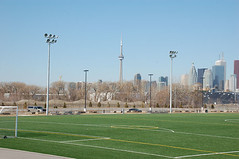 It's the most common injury among athletes. It afflicts soccer-mad tweens, basketball-loving teens, middle-aged joggers and elderly folks navigating staircases.
It's the most common injury among athletes. It afflicts soccer-mad tweens, basketball-loving teens, middle-aged joggers and elderly folks navigating staircases. It's the ankle sprain. Though "it's often underestimated, it can be a very significant injury," says Brian Waterman, an orthopedic surgeon at William Beaumont Army Medical Center and Texas Tech University Health Sciences Center in El Paso.
Doctors and sports trainers disagree on exactly how to prevent them and how gender, age, fitness and sports choices affect risk and recovery.
But Waterman provided some new clues in a study presented at a medical meeting Friday. The study is the largest ever to look at ankle sprain patterns in the USA, he says, and included 82,971 sprained ankles treated in emergency departments between 2002 and 2006. The sprains represent an estimated 3.1 million emergency-room cases, which might differ from those seen in doctor's offices or treated only at home, Waterman says.
The study, discussed at a meeting of the American Academy of Orthopaedic Surgeons, found that:
•Two people in 1,000 were treated in emergency departments for ankle sprains each year, but the risk varied greatly by age, reaching a peak of seven in 1,000 among teens ages 15 to 19.
• 49% of sprains occurred during athletic activities, and 40% of those were linked to basketball alone. Others were linked to football (9%); volleyball (4%); soccer (8%); softball (4%); running (7%); baseball (3%).
•27% of ankle sprains were linked to stair falls; just 7% were linked to walking on a level surface. The remaining injuries had a hodgepodge of causes.
•Males and females had almost identical sprain rates. But under age 30, males were most at risk; over age 30, females were.
It's worth noting that in a different study, of military cadets, Waterman found a much higher rate among women than men — suggesting that among fit young people participating in similar, strenuous activities, women might be more vulnerable.
The good news is that most ankle sprains feel better in a few days and heal completely in a few weeks. But previous studies suggest 60% of people who have one sprain will have another or will suffer long-term instability, weakness or pain. That could mean changes in gait, vulnerability to falls and fewer years playing a favorite sport.
"The cumulative damage can become a major issue," says Robert Duggan, an Orlando athletic trainer and foot and ankle surgeon.
So it's worth taking sprains seriously. Even a minor sprain should be treated with that old standby, RICE (rest, ice, compression, elevation). If you can't bear any weight on the foot, are in a lot of pain or the foot looks misshapen, you should see a doctor to rule out other injuries. And if pain and swelling don't recede after three or four days, a visit also is in order, says Daniel Farber, assistant professor of orthopedic foot and ankle surgery at the University of Maryland School of Medicine in Baltimore.
Farber says most patients benefit from doing some simple exercises. A few need physical therapy. Very few need surgery.
As for prevention, warming up before sports may help. So may bracing the ankle, though evidence isn't clear. And improper bracing can do more harm than good. High-top shoes are not proven to help, either, Farber adds.


